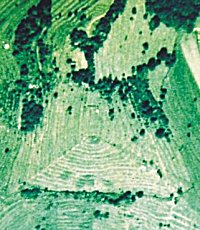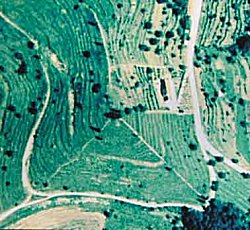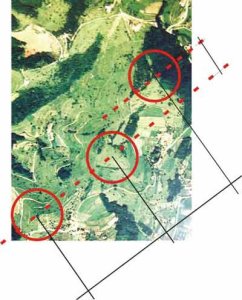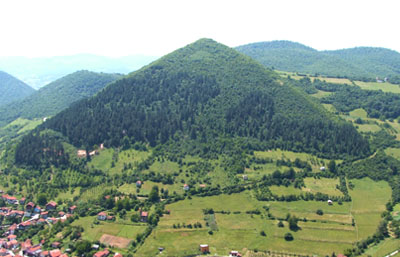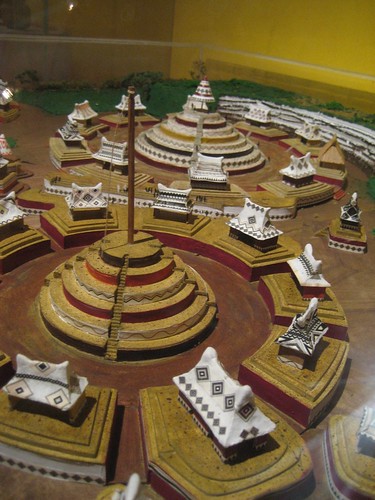Pyramids -> Cosmic Ray Shelters?
I was reading a paperback from the early 80’s entitled “The Nuclear Survival Handbook: Living through and after a nuclear attack“, by Barry Popkess. I was looking for some tips that might be useful in the event of any non-nuclear global cataclysms (for example a pole shift), and I can thoroughly recommend reading the chapters on disease and vermin, and the grim picture he paints. But it was the chapter on shelters that sent a chill down my spine. From my point of view, his detailed descriptions of how to build a nuclear radiation shelter parallel many facets of pyramids. If I am correct about the major role of cosmic rays in global cataclysms that occurred in our distant past, and the ancients believed the same, then perhaps the true purpose of pyramids can finally be understood.
I’ll dispense with paragraphs of introductions, background information and side-trips, and just present the evidence as I see it. Below are excerpts from the book of Mr. Popkess, and how I feel they tie in with corresponding Great Pyramid information.
(Other pyramids require less investigation – they were basically a case of “the more thick stuff that is above me, the less I’ll get zapped by cosmic rays” – and not designed for anything more than a specific temporary shelter)
[ Note: Obviously Mr Popkess is not describing pyramids, but rather shelters that you or I could feasibly build. He is also not just concerned with nuclear blast, but with fallout, bio-warfare and disease as well. Based on the following evidence, pyramids could therefore be shelters against any of these things, not just cosmic rays. ]
Affordability
(p67)
Few persons are able to afford all the requirements of an effective modern shelter.
Kings, pharaohs, religious and political leaders had the ability and influence to convince those under them to construct pyramids. Powerful people are prone to using their power for personal gain.
Exclusivity
(p69) A drawback to the use of public shelters arises from the speed with which modern weapons may be delivered. The shorter the warning of their approach the wider the entrances to the shelter need to be. And the door is likely to be the weakest point in any shelter, because it should be capable of being opened by those inside.
He is referring to the failure of Governments to provide public shelters, and possible reasons why. In ancient times the problems were the same. It was logistically impossible to provide shelter for everyone, and impractical if the threat could arrive suddenly. Those that govern will select themselves as being more worthy of having shelter – something that the US & Russian governments (amongst others) agree with.
General Design
(p68-9) Is the building, or part of it, suitable in its design and materials?
1 Resistance to blast. Steel-framed buildings and those of reinforced concrete are least likely to collapse. Mortar between bricks of old buildings may have lost its strength;
2 floors strong enough to support sandbags and falling debris;
3 an interior room;
4 a cellar or basement;
5 incorporating heat- or fire-resistant materials;
6 stairs. Interior stairs are protected from various poisons and radiation, exterior ones from fire. In tall buildings there should be both, for lifts may not be working;
7 cubic volume of building or part of it which may be sealed against entry of fallout particles, chemicals or biological agents (For practical purposes, one tenth of the cubic area contains the oxygen reserve.);
8 roof. Its slope should allow wind and rain to readily remove fallout
The Great Pyramid of Giza has resistance to blast – it is probably the most solid building on Earth. It contains interior rooms, a basement, is heat resistant, was sealed and the roof is on a bit of a slope.
Entrance
(97) This should be through a tunnel having the following features:
- at least one right angled bend
- a step or ramp at its outer end to
prevent entry of rainwater or fallout- a decontamination section in which clothing may be changed, and monitoring and cleaning equipment be kept
- an outer end facing away from the prevailing wind
- at least one efficiently sealing door with which air supply and contaminants may be controlled
The main door should be of steel plate at least half an inch thick…Though its blast resistance would be greater if it opened outwards, unless the shelter also has an emergency exit it may be better for the main door to open inwards so that marauders cannot jam it shut.
The entrance tunnel has a bend, but not at right angles. The main chambers are above the entrance, so that solves the rainwater issue. The decontamination section and prevailing wind are nuclear fallout specific, and probably not a consideration in the construction of the pyramid. The entrance face the prevailing north wind. The doors and plugs would have been effective seals.
The exterior entrance to the pyramid supposedly had a swivel door that opened inwards. According to Ian Lawton:
Is there physical evidence for a hinged-block system? The casing stones around the original entrance have now been stripped, as have many of the core blocks behind them, so it is impossible to judge. However the huge double gables over the “inner” entrance, albeit that they were built for support rather than decoration, somehow do not appear to us consistent with the idea of a small hinged door. Meanwhile Egyptologists such as Petrie and more recently Lepre have conducted detailed analysis’ of the way the “doors” might have worked, based primarily on the fact that the Bent Pyramid’s western entrance apparently shows signs of just such a system. The blocks on either side of the entrance are reported to contain distinct sockets in which the hinges would have swivelled, while the floor—although now filled in—originally contained a deep recess which would have been necessary for the block to swivel inwards; (this is Lepre’s reappraisal of Petrie’s theory, which suggested, apparently incorrectly and based on Strabo’s original description, that it would have swivelled outwards). Lepre also suggests that the Meidum Pyramid contains similar sockets.
Volume needed for air etc
(p90-4)
Here we shall consider a group consisting of two children, their mother and father, and two additional men included as protection from looters.The group themselves
Four adults averaging 11 stone each, and two children who average 51/2 stone each will occupy about 20 cubic feet
Their food
One man will need about 4000 calories per day while he works a manual air pump and cycle-generator and engages in other hard work. If he shares the task with others they will share the extra food allowance which therefore
remains the same. The foods which this ration might include, listed below, are neither the most or least suitable for the purpose but selected at random from stocks which most supermarkets hold.:425g tin creamed soup, 340 calories, 31.5 cu in
198g tin ham, 578 cals, 15.9 cu in
397g tin tomatoes, 79 cals, 29.7 cu in
425g tin kidney beans, 382 cals, 31.8 cu in
822g tin apricots, 715 cals, 58 cu in
200g pkt biscuits, 665 cals, 29 cu in
325g cheddar cheese, 1300 cals, 19 cu inTotal: 4059 calories, 215 cu in
Each additional and presumed ‘resting’ man will need about 1600 calories per day if he is to remain capable of instant strenuous activity:
500g pkt raisins, 1426 calories, 27.5 cu in
43g cheddar cheese, 175 cals, 2.53 cu inTotal: 1601 calories, 30 cu in
Each presumed ‘resting’ woman will need about 1300 calories per day:
410g evaporated milk, 522 cals, 29 cu in
822g apricots, 715 cals, 58 cu inTotal: 1267 calories, 87 cu in
Each child will need about 1000 calories per day:
425g tin creamed soup, 340 cals, 31.5 cu in
200g pkt biscuits, 665 cals, 29 cu inTotal: 1005 calories, 60.5 cu in
Three months’ food for our group of six therefore occupies about 25 cubic feet of shelter space, and the space that everyone and everything which the shelter is to hold needs to be worked out in a similar manner.
Their individual kits
1 pair boots, 50 cu in
2 pairs trousers, 680 cu in
2 pairs pants, 200 cu in
3 pairs socks, 129 cu in
2 vests, 160 cu in
3 pullovers, 1011 cu in
1 anorak, 600 cu in
1 overcoat, 1400 cu in
1 raincoat, 600 cu in
1 pair gloves, 30 cu in
1 scarf, 110 cu in
protective clothing, 6000 cu in
1 blanket-poncho, 2000 cu in
1 mattress, 7776 cu in
1 sleeping bag, 665 cu in
eating utensils, 40 cu in
toiletries, 140 cu in
4 rolls toilet paper, 300 cu in
misc. personal possessions, 500 cu inIndividual kits of the six members of the group will occupy about 78 cubic feet of shelter space.
Shelter equipment
Partition between living & decontamination areas, 12,096 cu in
latrine, 400 cu in
heater, 1944 cu in
cooker, 393 cu in
medical, 2200 cu in
two tins disinfectant, 1200 cu in
one tin rat poison, 600 cu in
two monitors, 576 cu in
weapons for self defence, 1800 cu in
tools, 3000 cu in
cylinder of compressed air, 2289 cu in
two transistor radios, 296 cu in
pots, pans, bucket, mop etc, 500 cu in
reference books, 1296 cu in
seeds and yeast, 1728 cu in
two torches, 62 cu in
cycle, 576 cu in
cycle stand, 144 cu in
two batteries, 2240 cu in
battery charger, 648 cu in
manual air pump and filter, 3592 cu in
fuel, 32,556 cu in
lime, 4032 cu inTotal: 43 cubic feet
Water: 5.5 cubic feet
Grand Total: 171.5 cubic feet (doesn’t allow for awkward shapes, is only for the purpose of calculating air reserve)
Air reserve
The supply of air from outside may at any time be interrupted by the air pump breaking down or its operators
becoming tired; if, in the close conditions in the shelter, everyone sleeps of becomes ill at the same time; if there is severe air pollution outside, or if the shelter’s air inlets become damaged or are blocked by looters intent on forcing the occupants to quit. Clearly, an air reserve sufficient for twelve hours should be regarded as minimal.A twelve hour air reserve for six ‘resting’ people is therefore 24,000 litres or 858 cubic feet. If all six were not resting, but one was engaged in strenuous activity, his air intake might be as much as that of all his companions together, and the area enclosed by the twelve-hour air reserve therefore need to be twice as great.
Hence the minimum capacity for a purpose-built shelter for six persons is 1030 cubic feet, which, assuming an internal height of six feet three inches, allows a floor space of
a hundred and sixty-six square feet. But because all the group may not be ‘resting’ all the time, and as the latrine and washing arrangements, decontamination procedures and working for the air pump and cycle generator would be almost impossible in so small an area, the actual internal dimensions of the shelter should exceed these by as much as the resources of the owner reasonably permit.
According to the Pharaoh’s Pump Theory of Edward J. Kunkel, the internal capacity of the pyramid is 600 cubic metres, which according to the above figures is enough space and air for 120 people. Given that the pyramid has rooms with higher ceilings (Grand Gallery is 28 feet high, Kings Chamber roughly 19 feet high), less people than 120 could live in the pyramid – but a group of 6 people definitely could. For the purposes of pumping air, high ceilings would be inefficient, so we must presume that the ancient folk who designed the pyramid shelter did not pump the air manually.
The main internal dimensions for the pyramid are:
King’s Chamber
10.5 x 5.2 m, 5.8 m high
Queen’s Chamber
5.8 x 5.3 m, 6 m high
Grand Gallery
46.7 x 2.1 m, 8.7 m high
Ascending Passage
39 x 1.5 m, 1.6 m high
Descending Passage
91.5 x 1.1 m, 1.2 m high
Subterranean Chamber
14 x 7.2 m, 5.3 m high
Construction Materials
(p94)The following give minimum shielding from radiation:
three inches of lead
seven inches of steel
eighteen inches of tiles
twenty inches of asbestos sheeting
two feet of concrete
twenty-six inches of asphalt or stone
thirty inches of sand
three feet of brickwork, slates, concrete blocks filled with sand or of well packed earth
five feet of water
seven feet of books or magazines
nine feet of woodOf these the most readily available is earth. 3.3 inches of soil halves fallout radiation, and 7.5 inches of it reduces initial gamma radiation by a half. As with all barrier materials, if we double any given thickness of soil we more than double the protection from radiation which it affords. Thus three feet of soil gives twice the protection from neutrons and five times the protection from initial and fallout gamma radiation that one foot less would give.
In practice, however, concrete is the ideal material for a survival shelter. It resists blast, heat, all forms of radiation and attempts at forced entry by looters. It is fireproof and waterproof, can support such fittings as heavy doors… and is cheap. 2.2 inches of concrete halves the radiation from fallout, and 6 inches of it does the same to initial gamma radiation. It is so effective because, containing light elements such as hydrogen and also heavier ones such as calcium and silicon, it both slows neutrons and reduces gamma rays. But concrete can become an even more effective barrier to radiation if certain heavy materials are mixed with it. One such heavy additive is the iron ore limonite, and another is barite/barium sulphate from heavy spar.
There is no doubt that the thickness of the pyramid would be highly effective in blocking cosmic rays and other forms of radiation – there is almost 100 metres of stone between the King’s Chamber and the sky.
The ancient Egyptians experimented with pyramids of different angled slopes, in an attempt to gain the greatest height from the least materials. Why was height important? Well, the higher the pyramid, the greater the cosmic ray protection afforded to those sheltering directly beneath the pyramid. The typical Egyptian pyramid has a cavity directly below the apex of the pyramid, just below ground level. I believe that these cavities were the original crude shelters, and the pyramids were thought up at a later date. The placing of the chambers high within the Great Pyramid could just be an aspect of the “showing off” displayed by their clever incorporation of mathematics.
The Famine Stela has been used as evidence to support the theory of the Giza pyramids being made out of concrete. Three additives to the concrete are mentioned, based on their smell:
“The garlic stone: Garlic has been suggested for HUTEM and TAAM, i.e. the root word TEM. In col. 16, the ore TEM-IKR could represent the garlic stone, the prefix KR meaning weak, i.e. the stone which has a weak smell of garlic.”
“A simple method in petrography for the identification of natural minerals and ores is to heat them with a small blow lamp. If they immediately release a smell of garlic, they belong to the arsenate family (arsenate of copper or of iron).”
It was valuable to identify arsenate, because it is very toxic – so there is a remote chance that the Giza pyramids are made of concrete which has arsenate of iron mixed in with it.
Also, a Central American pyramid contains broad, thick layers of mica, which had to be transported over 2000 miles from Brazil. These sheets are ninety feet square and were not visible, but merely another layer in the construction. Perhaps its purpose was radiation shielding? Sheets and rods of mica bonded with glass can tolerate extreme temperatures, radiation, high voltage, and moisture. One of the modern uses of mica is windows for microwave ovens. It is also used in Geiger counters and cosmic ray detectors.
Ventilation
(p101-2) A chimney leading through the roof, curved at its outside end away from the prevailing wind, or fitted with a revolving cowl, may be sealed at its inside end after warning of use of chemical or biological agents. Air inlets and vents should be fitted with blast valves which will seal the inside of the shelter from changes in air pressure outside it, and which, in a heavily built-up area should also be capable of being closed to prevent the air inside the shelter being sucked out by a firestorm which might otherwise asphyxiate the shelter’s occupants.
In an elaborate ventilation system air filters may be incorporated. Fine mesh prevents entry of large particles and droplets. Activated charcoal granules, available commercially, may be used as absorbents
Heater, cooker, latrine and incinerator should be located near the air outlet.
The pyramid has four shafts which were dubbed “ventilation shafts” by nineteenth century egyptologists – because that is what they most resemble.
The Queen’s Chamber has two shafts, however they had to be cut open from the inside of the chamber, and they do not reach the outside of the pyramid. It was almost as if they are spares.
The two shafts of the Queen’s Chamber have hogged the
limelight in recent years – due to Rudolf Gantenbrink’s discovery of a door at top of one of them – and it is easy to forget that the shafts of the King’s Chamber actually connect the chamber with the outside of the pyramid, like a proper air shaft should. And today the shafts are have been fitted with fans and actually used for ventilation!
There were possibly iron doors at the chamber end of the shafts:
“The plate was, after all, reported to have been found near the outer opening of the King’s Chamber southern “air passage.” The discrepancy between the size of the plate (30.5 x 10 cm) and the size of the opening of the shaft (30.5 x 23.3 cm) may be explained by the plate’s obvious fragmentary nature. The plate in its original form could easily have been a good fit.”
Temperature inside the pyramid
“When the airshafts were cleaned and opened, cool air immediately entered the King’s Chamber. Since that time, the King’s Chamber has always maintained a constant comfortable temperature of 68 degrees, no matter what the outside temperature was. This seems to be one of the earliest forms of air conditioning. “
http://www.gizapyramid.com/history2.htm“There is so much stone mass in the pyramid that the interior temperature is constant and equals the average temperature of the earth, 68 degrees Fahrenheit. “
(page 40,- Dramatic Prophecies of the Great Pyramid, 1974, Rodolfo Benavides, ISBN 0-914732-00-5)
It could be that there are two main reasons why the pyramid is as big as it is. Thickness to help block cosmic rays, and density to maintain a constant temperature – a similar temperature to that experienced by other potential survivors who chose to hide underground. It would also be close to the nicest temperature to live
in, considering that a common setting for air conditioners in winter is 68 degrees. In Coober Pedy, Australia, where people live underground to escape the heat, dugouts have an average temperature of 23º – 25ºC year round = 73-77 degrees Fahrenheit – but they are much closer to the surface than the interior of a pyramid..
Lighting
Obviously the interior of the pyramid would be too dark to be comfortable in. Many have speculated on what would have been used. Lit torches would have been the most common means back then, but a lack of soot within the pyramid seemingly rules
that out. Some have suggested an arrangement of mirrors. My favorite is more hi-tech. Several images from the crypts of Dendera appear to show modern electric light-bulbs.
http://www.doernenburg.alien.de/alternativ/dendera/dend00_e.php
http://www.doernenburg.alien.de/alternativ/dendera/dend03_e.php
Food
No need to discuss this at length – the height of the rooms means they had enough storage space for food supplies – the inhabitants could have potentially lived on top of their supplies… except to say that:
Egyptian hieroglyphics indicate that the consumption of mushrooms would bring them immortality. Perhaps this is just reflecting the ability of mushrooms to create food in an environment without light – an environment that affords an immortality of sorts to those who sheltered there?
Toilet Facilities
I vote for the subterranean chamber to be the latrine and trash area. It is unfinished which indicates the royal survivors would no spend much time there. It has a 20 metre deep pit. And there is the escape shaft (also known as the well shaft or service shaft) which looks to me like a laundry chute – ie an easy way of throwing waste down to the basement without trudging down the passageways
Sabotage & Emergency Exits
(p96) When concrete is poured, holes in it will need to be left for external fittings to be added. These fittings will include air inlet(s) and vent(s), an external aerial, the disposal chute and latrine pit, a pipe from an outside water supply, an emergency exit and, if desired an external-radiation sensor and periscope. Because air and water pipes, aerial, surface-radiation sensor and periscope are all liable to cut, blocked or damaged by looters, as well as give away the position of the shelter, they should be camouflaged and duplicated by less well-hidden decoys, the lower ends of which lead away from the direction of the shelter.
A secret entrance (obviously in this case it would be a secret exit) has long been speculated, but not yet found. A key piece of evidence is that the second pyramid (called Khafre or Chephren) has two entrances.
But this pyramid does have redundancy in the air shafts. By having two that reach the exterior, and two more that don’t quite reach the exterior, one could speculate that the second set were spares, in case of sabotage. If someone on the outside rendered the air-shafts unusable, they could complete their spare shafts and breathe again.
I’m not suggesting that I know how they would complete the spare shafts, but it’s easy to suggest that they used the same technology that allowed them to build the pyramid itself.
Of course one could use the air shafts to facilitate a periscope.
Giant Pump
It has been suggested that the pyramid is a giant pump – either used for raising the blocks when it was built, and/or to help with irrigation. A third possibility is to remove any water that got into the pyramid, if the local area had flooded.
























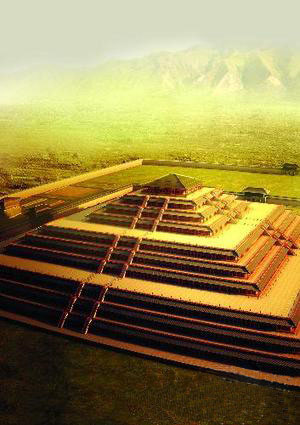
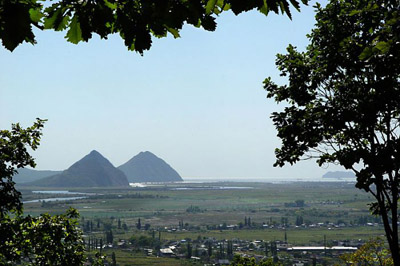
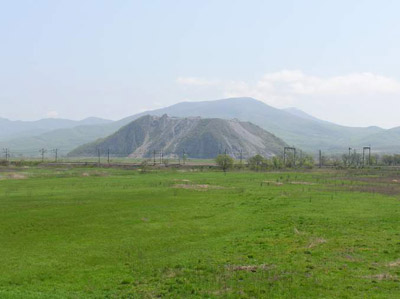
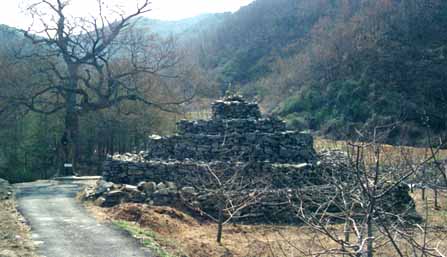
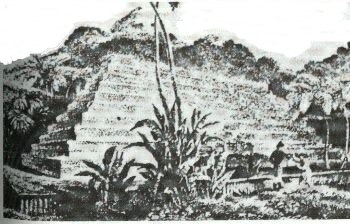



 Dozens more photos
Dozens more photos 



